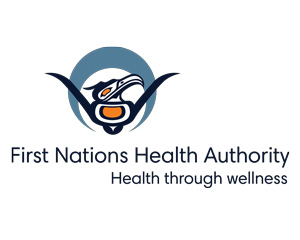
As BC begins to reopen, we each need to continue to follow public health guidelines to stop the spread of COVID-19.
June 1 marked the re-starting of many activities and services under Phase Two of BC's pandemic response – but public health officials warn that safety measures such physical distancing and frequent handwashing remain critically important.
Schools are re-opening, as are many businesses and facilities such as provincial parks and campgrounds. Public transit has resumed operations as workplaces start to have employees return. However, these changes do not mean life is “back to normal." Large gatherings remain very high risk, even outdoors, and the FNHA continues to recommend the cancellation of all large public and community gatherings.
“Summer is usually a time for many of us to travel, visit our home communities and celebrate with loved ones," said Dr. Shannon McDonald, the FNHA's Acting Chief Medical Officer. “This year needs to be different. Each of us needs to continue to take precautions for our own protection and the protection of our loved ones and communities. That means staying home if you're sick or have symptoms, and continuing to limit your physical interactions to a small, consistent group."
With no targeted therapies or vaccine available, personal public health measures need to be taken in order to control the spread of the virus in the long-term.
“To keep this pandemic of COVID-19 at bay, we need to stay slow, start with a low number of people," said BC's Chief Medical Health Officer, Dr. Bonnie Henry. “Fewer faces and bigger spaces still applies."
The following practices should continue:
• Staying informed, being prepared and following public health advice.
• Practicing good hygiene and other infection prevention and control measures (washing hands; avoiding touching your face; coughing into your arm or a tissue that is thrown out immediately after; disinfecting frequently touched surfaces).
• Maintaining physical distancing (two metres or six feet) from non-household members as much as possible when outside of the home.
• Increasing cleaning of one's personal environment.
• Staying at home and away from others if feeling ill or symptomatic.
• Staying at home as much as possible if at high risk for severe illness.
• Wearing a medical mask if appropriate, or a non-medical mask or face covering when physical distancing is a challenge, such as on public transit.
• Reducing non-essential travel.
“As we start week three of Phase 2 of our COVID-19 response, it's important to pause and remember what has brought us to this point in our social, surgical, and economic renewal," said Health Minister Adrian Dix on Monday. “It's been our collective effort to stop the spread, and our individual commitment to physical distancing that has made the greatest difference. Physical distancing saves lives. While we embrace renewal and the opportunities for new contacts it creates, at home, at work, at school and while out and about in our communities, we must continue to use the skills Dr. Henry and others in public health have taught us."
The FNHA Releases New Services Resumption Guide for Community Leaders:
Check this link for the FNHA Services Resumption Guide. This document contains guidance and recommendations related to the re-opening of communities and the resumption of operations. Information presented in this guide is intended to support discussions and decision-making at a community and Nation-level, recognizing the inherent self-determination and decision-making of BC First Nations.

